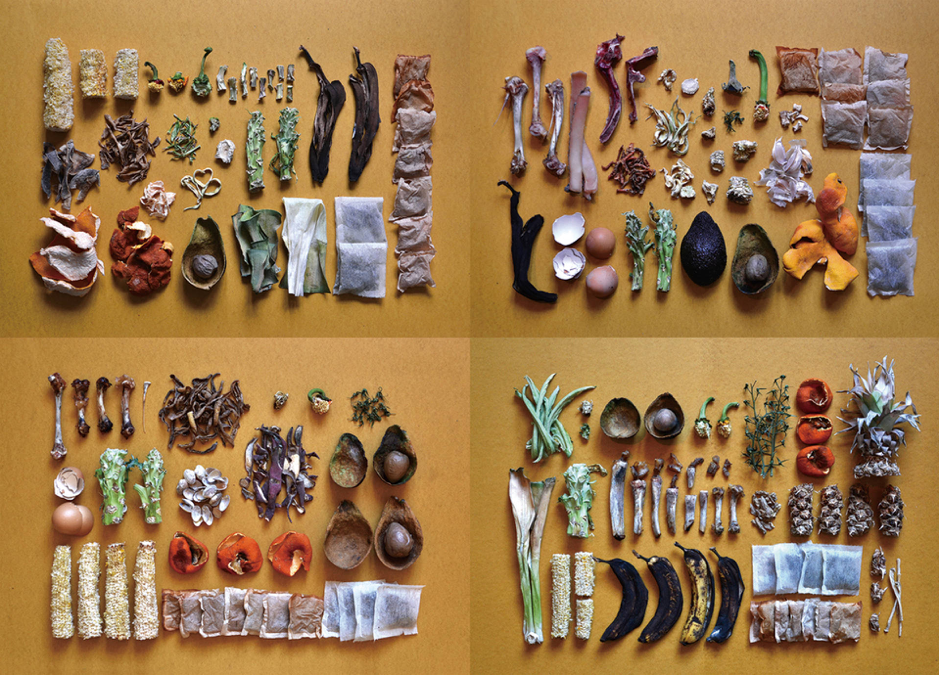Kosuke Araki
One designer is currently making kitchen essentials called ‘Anima’ out of a variety of organic food waste.
While studying at the Royal College of Art in London in 2013, Tokyo-based designer Kosuke Araki began to document the various sources of food waste he noticed around him.
After surveying local markets, shops, and his own kitchen, Kosuke began collecting food waste to try his hand at creating a usable material from it. He switched between drying out vegetables or using conduction to carbonise the waste into charcoal – and both worked.
In a bold move, Kosuke took the charcoal and mixed it with what he calls ‘animal glue,’ a substance achieved by boiling leftover bones and skin from meat scraps. The now-blended material could be easily moulded into various shapes such as bowls and cups.
Each item gets its shine and strength from being coated with ‘urushi’ a traditional Japanese lacquer made from tree sap.

Kosuke’s main goal is to transform our view of discarded food.
Eating from a plate or bowl like Kosuke’s brings home how ‘waste’ can return to the table in a functional and wholly sustainable way.
The concept shifts our thinking of waste to see it as valuable, hopefully sparking a change in our everyday behaviours.
‘Food is not a thing but life. We eat life for our existence. However, for lack of appreciation, we ‘consume’ life at a huge industrial scale…disposing of it in landfills,’ says Kosuke.
After taking on a two-year experiment with his own household food waste, Kosuke has managed to create a collection of items and recycled at least 315kg of eggshells, bones, and rotten fruits and vegetables.

Barbara Gollackner
Austrian restaurant owner and chef Barbara Gollackner has developed a range of tableware items such as plates, bowls, and cutlery made from discarded agricultural material.
After learning of the massive food waste occurring each year in the EU, she was prompted to experiment using the leftover scraps from her restaurant, home, and vendors in her local area.
Collecting organic materials like pork skin and old bread sourced from personal and industrial waste, Barbara dried out or cooked the material before blending it into a paste.
Like Kosuke, she needed to find a way to hold the paste together structurally. For her line, Barbara chose to utilise mycelium, made from mushrooms. This natural substance is then placed in a 3D printer and shortly after, it emerges in various shapes.
Thanks to their biodegradable and natural properties, the cutlery and tableware can be used just once or multiple times – all without leaving a lasting mark on the environment.
Barbara says the team continues to experiment with different consistencies of printing paste, with the main challenge being incorporating more complex shapes. As of yet, 3D printers can’t handle intricate designs, but the technology is constantly improving.
While any kind of innovation is exciting, it’s arguably even more worthy of praise when it seeks to reduce the impact of environmentally and socially taxing practices.
As we seek out more opportunities to reduce, reuse, and recycle, it looks like creatives who are bold enough to look outside of the box will be the ones leading the way.























